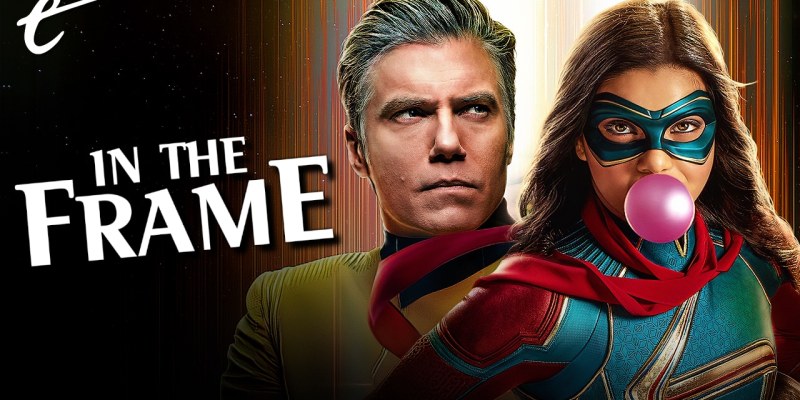Fandom is not a new concept by any measure. Organized fandom dates back to the publication of the Sherlock Holmes stories by Sir Arthur Conan Doyle, at the very latest. However, the concept has really burst into the mainstream in the past 70 years or so, owing to teenage fandom around celebrities like Elvis and the Beatles or the emergence of Star Trek as the first modern fandom. It has been interesting to watch media companies engage with that idea, particularly in recent years.
Of course, popular culture was always aware of fandom. Early films that dealt with the concept tended to focus on celebrity fandom, and they were quite wary of the concept. In All About Eve, aging Broadway star Margo Channing (Bette Davis) welcomes a young fan named Eve Harrington (Anne Baxter) into her life, only for Eve to begin to usurp and replace Margo. The movie ends on a grim irony, with the now-famous Eve encountering her own superfan, Phoebe (Barbara Bates).
Similarly, Clint Eastwood’s directorial debut, Play Misty for Me, found the veteran actor playing a radio disc jockey named Dave Garver, who sleeps with an obsessive fan named Evelyn Draper (Jessica Walter). Naturally, Dave gets more than he bargains for, with Evelyn becoming increasingly possessive of Dave. As William Beard argues, quite like Don Siegel’s The Beguiled from the previous year, Play Misty for Me is essentially about “the power (Eastwood) wields over all fans.”
It is perhaps notable that many of these early studies of fandom were explicitly gendered. While this perhaps reflects the extent to which much of early fandom was female, it undoubtedly also ties into some of the reactionary anxieties about the social change taking place in American culture. Play Misty for Me is not too far removed from the Reagan-era anxieties of Fatal Attraction, the story of a man who attempts to take advantage of sexual liberation only to face severe consequences.
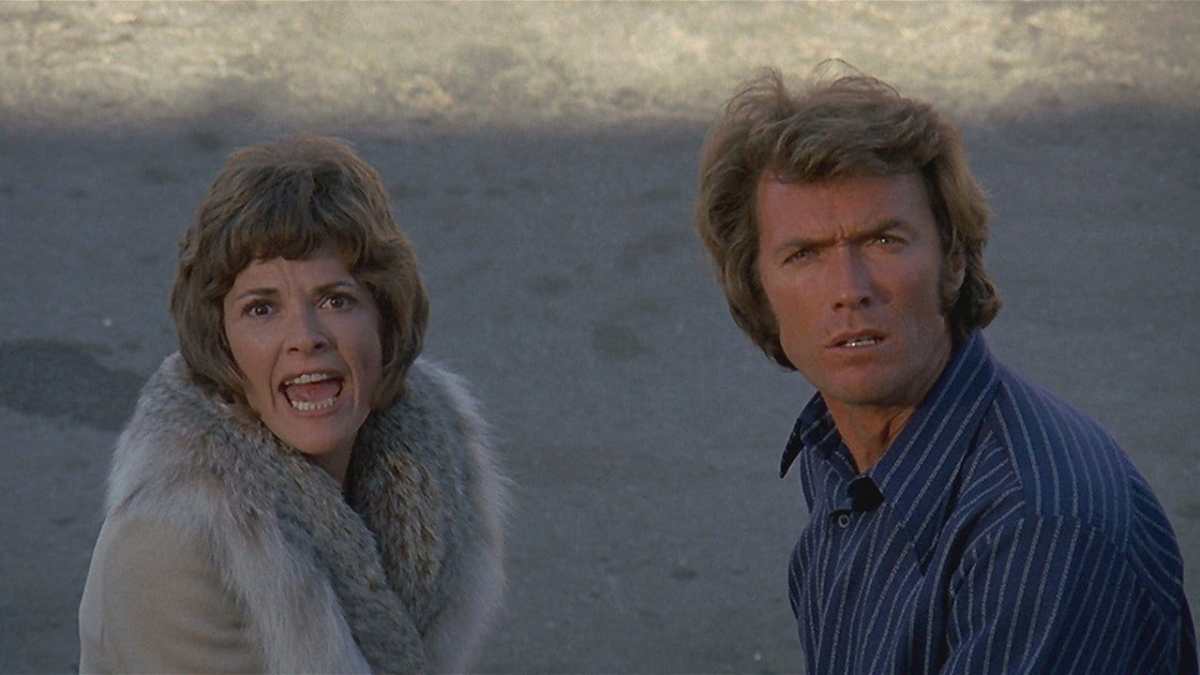
However, these early stories suggest an anxiety about this celebrity worship. They serve as cautionary tales about how those who obsess over such objects often desire to possess and control them. The cliché of the “psychotic fan” continued into the 1990s. An anonymous stalker (Tony Pierce) of singer Rachel Marron (Whitney Houston) is a red herring in The Bodyguard. In The Fan, Gil Renard (Robert DeNiro) obsesses over his favorite baseball player, Bobby Rayburn (Wesley Snipes).
Towards the turn of the millennium, mainstream media began to engage more seriously with the idea of fandom, folding the concept into its narratives. The climax of Galaxy Quest finds superfan Brandon (Justin Long) helping to save the cast of his favorite science fiction show. The final two seasons of the original run of The X-Files introduced the character of Leyla Harrison (Jolie Jenkins), who is presented as an in-universe fan of Mulder (David Duchovny) and Scully (Gillian Anderson). The sixth season of Star Trek: Voyager, broadcast between September 1999 and May 2000, featured several episodes on the topic, such as “Pathfinder,” “Blink of an Eye,” “Muse,” and “The Voyager Conspiracy.”
These portrayals were more sympathetic to fandom, but they were still somewhat cautious. In Galaxy Quest, Brandon’s unironic enthusiasm for and obsession over the show is contrasted with the more world-weary cynicism of one-time guest-star Guy Fleegman (Sam Rockwell). Some X-Files enthusiasts felt that Leyla Harrison was a critique of fandom, although writer and producer Frank Spotnitz insisted in contemporaneous interviews that such fans were “misreading” the character.
In the new millennium, studios grew more comfortable embracing fandom. They will often take projects to conventions like San Diego Comic-Con to help build enthusiasm for a project, treating the fanbase as a free marketing department. If SDCC has declined in recent years, it is because studios have tried to more directly exploit that dynamic, organizing their own fan conventions like D23, crafting more fan-friendly social media presences, and even launching their own publicity wings.
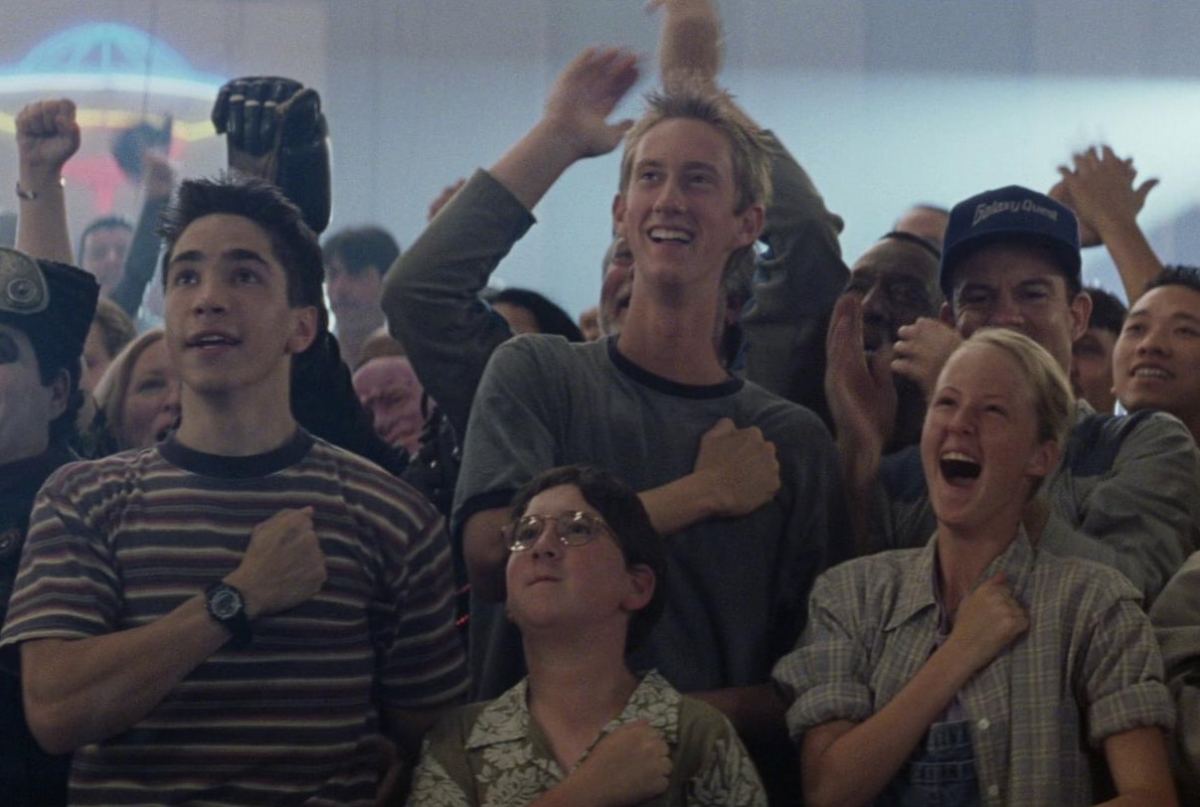
Unsurprisingly, there has been a shift in how fans are portrayed within these major works. There are still occasional psychotic fans in movies like the most recent Scream, but more biting portrayals of fandom are increasingly rare. In The Incredibles, the villain is a bitter fan named Syndrome (Jason Lee). However in Incredibles 2, the villain isn’t superhero superfan Winston Deavor (Bob Odenkirk), but instead his more critical and cynical sister, Evelyn (Catherine Keener).
Protagonists of modern franchise installments are often positioned as fans of those franchises. Rey (Daisy Ridley) is introduced in The Force Awakens as an obsessive fan of the original Star Wars films, collecting memorabilia and geeking out at meeting Han Solo (Harrison Ford). In Captain America: Civil War, Spider-Man (Tom Holland) introduces himself to Steve Rogers (Chris Evans) as a “big fan.” Ghostbusters: Afterlife features Gary Grooberson (Paul Rudd) as a Ghostbusters obsessive.
This is true even when it doesn’t really make sense for fandom to work that way within the universe. Ms. Marvel introduces Kamala Khan (Iman Vellani) as a superfan of Carol Danvers (Brie Larson). The first episode even features Kamala attending Avengers Con, an in-universe fan convention. Head writer Bisha K. Ali explained the decision to build the show around Kamala’s fandom by stating, “This is a show for fans, and for a fan’s fantasy of becoming part of Marvel.”
Narratively, it doesn’t really make sense. After all, Steve Rogers spent several years before the events of Avengers: Infinity War as an international fugitive aiding a known terrorist and assassin, Bucky Barnes (Sebastian Stan). He should be a controversial figure within the universe. Sure, the superheroes saved the universe in Avengers: Endgame, but only after half of all life got wiped out for five years. It’s hard to imagine they’d be universally beloved within the fictional world.
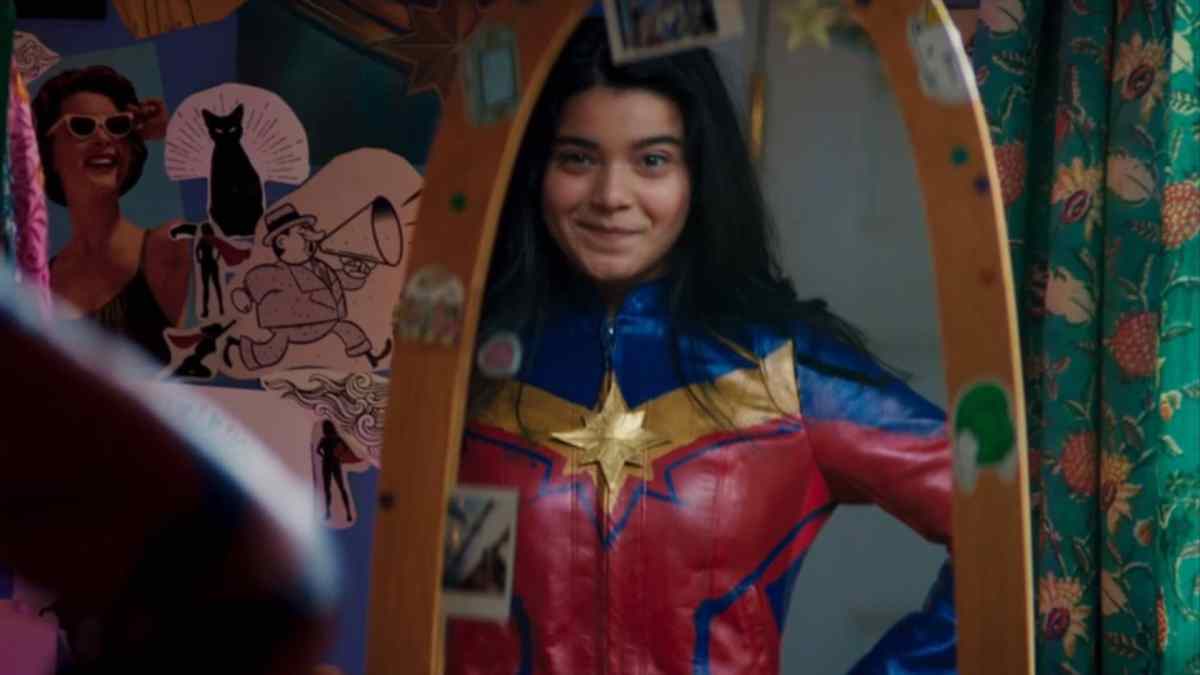
More than that, gatherings of fandoms around individuals holding that sort of political power aren’t conventions in the sense that fans understand them. They are rallies. There should be something just a little bit unsettling about young people dressing up to resemble these figures who operate outside the boundaries of civic structures. There is a sense that The Boys has a better understanding of what that level of fanaticism looks like when devoted to the worship of flesh-and-blood figures.
Of course, that’s not the point here. The depictions of fandom in media like Ms. Marvel are not meant to be taken literally. Instead, they represent massive media conglomerates seeking to codify and normalize the behavior of their own fandoms, with critic Scott Mendelson summarizing Ms. Marvel as “a Disney show partially rooted in how cool it is to worship Disney IP.” There is a sense in which these modern franchise installments can feel like instruction videos on how to be a fan.
In Ghostbusters: Afterlife, Gary is an older fan who can pass down fandom to a new generation, teaching kids like Phoebe (Mckenna Grace) and Podcast (Logan Kim) about the importance of venerating Ghostbusters as intellectual property. The opening episode of Star Trek: Strange New Worlds features a planet that only pulls back from the brink of apocalypse when its inhabitants start obsessing over Starfleet iconography. Only Star Trek fandom can save us, the premiere seems to argue.
There is admittedly something uncomfortable in all of this. In some ways, it perhaps reflects a deep anxiety about these long-running franchises. Franchises like Star Wars and Star Trek have been running so long that many original fans are aging. Even the Marvel Cinematic Universe has been around over a decade. As such, the urge to institutionalize fandom within these properties, to set a model of behavior that outlines what is expected from newer fans, is an understandable impulse.
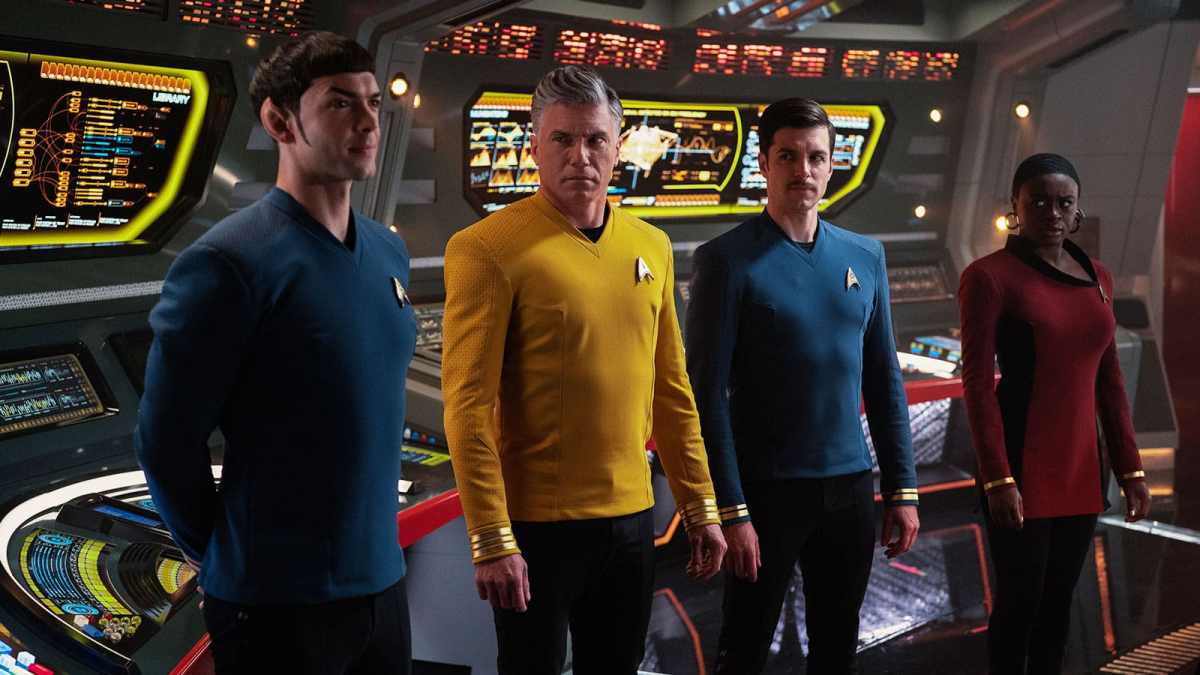
There is a sense that many of these properties are effectively “narrowcasting.” Both Ms. Marvel and Strange New Worlds are streaming shows, releasing on platforms that are built firmly around the brands to which they are tied. Disney+ wants to be the streaming service of choice for Marvel fans, while Paramount+ has sold itself as the home of Star Trek. These are not necessarily shows intended for mass audiences, but designed to appeal to the base. Naturally, fans are foregrounded.
Not all portrayals of fandom are so shallow. Lana Wachowski’s The Matrix Resurrections features Bugs (Jessica Henwick) as an obvious fan stand-in character. Bugs talks concretely about how much Neo (Keanu Reeves) meant to her. In keeping with the film’s wariness about hollow nostalgia, Bugs is not an uncritical consumer. “They took your story, something that meant so much to people like me, and turned it into something trivial,” she explains of how the Matrix weaponized Neo’s narrative.
Sadly, most of these modern portrayals of fandom feel just as cynical as the more openly skeptical takes in earlier projects like All About Eve or The Fan. Many of these recent examples are stories about how important it is to be a fan of these massive properties, presenting the viewer’s fandom — and their ongoing financial investment — as a heroic act worthy of celebration of itself. Maybe fans can’t save the world, but they can keep these franchises afloat. Perhaps that’s enough.
